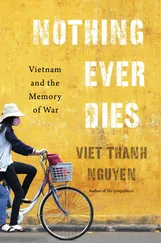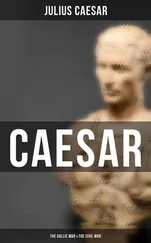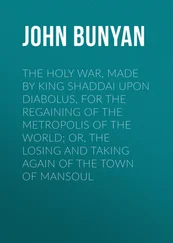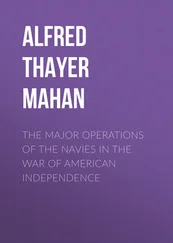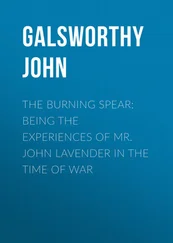Popular resistance to Diem gradually began to materialize. A peasant uprising in the Mekong Delta attacked and overthrew village administrations (January 17, 1960), which was a reaction to the oppressive measures of the regime in building and maintaining the hated “agrovilles.” In August of the same year, US intelligence produced an estimate that the South Vietnamese government had to win the support of the peasants or discontent would increase. 19Diem also encountered resistance by his own troops in Saigon. In the paratroop revolt (November 11-12, 1960) led by two colonels, which initiated the cycle of plotting against his regime, Diem was declared incapable of saving the country from Communism, and American intelligence confirmed the dissatisfaction with his inability to inspire resistance to it. 20As if to confirm this perception, there was a dramatic increase in revolutionary activity on the part of Diem’s adversaries. North Vietnamese leaders, who had already authorized limited armed resistance and selected assassinations of officials in South Vietnam, hoped that an indigenous southern movement would lead the insurrection there. They were concerned with consolidating their gains in the north, but their southern strategy received unsolicited help from Diem himself as his unpopularity grew. The southern revolutionary forces united in December 1960 to form the National Liberation Front (NLF)—an organization originally intended to “rally all those disaffected with Diem,” including non-Communists, to push toward independence. 21
The US government remained committed to prevent a Communist takeover by means of financial and military support of Diem’s regime. President Kennedy sent one fact-finding mission after another to Vietnam, most of which were optimistic about the possibility of victory. In one report, Defense Secretary McNamara and General Taylor, for example, thought that a military program of anti-guerrilla war might reduce insurgency to “organized banditry” by 1965. 22Diem did not make the American effort easy, although he promised Kennedy in a letter (December 14, 1961) that he would be content to “liberalize” his regime in return for a large increase in aid. 23In January 1962, the US Air Force began flying defoliating missions in Vietnam, and in the following month the organization that would take over responsibility for conducting the war, the Military Assistance Command, Vietnam (MACV), under General Paul Harkins, was installed in Saigon (February 8, 1962). 24Two weeks later (February 27), two Vietnamese pilots flying American planes, in protest against Diem’s prosecution of the war, bombed and strafed the presidential palace, but Diem and his family escaped harm. 25
This attack confirmed Diem in his belief that his true enemies were domestic. His “strategic hamlet” program, essentially a renewal of the agrovilles, also proved ineffective and was used mainly by Diem and his brother Nhu to increase their control in the countryside. 26As government repression continued, social ferment increased, culminating in the so-called Buddhist crisis. In a country where Buddhists constituted 70% of the population, twenty thousand Buddhists celebrating the traditional birthday of the Buddha were fired on, resulting in nine dead and twenty wounded. Diem, whose government was dominated by Catholics (10% of the population) because he thought that they were more politically reliable, blamed the shooting on the Vietcong. 27The crisis reached its climax in June, when the monk Thich Quand Doc set himself on fire at a Saigon intersection as a political and moral protest. The widely circulated news photo of this gruesome spectacle brought the regime’s repression of Buddhists to international attention. Diem resisted American requests to defuse the crisis and lost US support.
At home, President Kennedy began to express doubts about Diem, even proclaiming on television that the South Vietnamese leader had become out of touch with his own people. When the rumors emerged that Diem’s brother Nhu had cut a pragmatic deal with the Communists to deal out the Americans and stop fighting the war, the US government began to exert pressure on Diem to discard Nhu, and when that failed, began to consider supporting a military coup . 28Kennedy appointed Henry Cabot Lodge, his former Republican opponent, as Ambassador to Vietnam to reduce criticism of his Vietnam policy before the 1964 election. 29Before Lodge arrived in Saigon (August 22, 1963) to replace Diem’s friend, the current US Ambassador Frederick Nolting, anti-government plotting was already taking place: General Tran Van Don had informed CIA operative Lucien Conein on July 4 that a coup was being planned. 30The Ngo brothers, who controlled an extensive network of spies, suspected that Lodge was sympathetic to a plot against them. The conspirators, led by General Duong Van Minh (nicknamed “Big Minh”), were cautious about committing themselves, because earlier attempts had been aborted for fear they would not be firmly backed by the US. Lodge encouraged the conspirators with promises that the US would not interfere, while the US government insisted on maintaining “plausible denial” of Lodge’s participation. 31
Tran Van Don proposed to Diem that he declare martial law to prosecute the war more effectively, but the real motive of the conspirators was to consolidate forces for the coup , while Diem and his brother hoped to implicate the army in cracking down on the Buddhists. Accusing the Buddhists of being Communist inspired, Nhu used members of an organization loyal to him, who were disguised as regular army soldiers, to attack Buddhist temples on August 22, 1963, beating, killing, and arresting hundreds of monks, students, and activists. Spontaneous demonstrations took place in various cities as a reaction, and President Kennedy himself emitted a protest. 32Ambassador Lodge met with Diem, who refused to dismiss his brother Nhu. At the same time, Lodge assured the generals of support if Diem did not agree to this demand as well as other necessary reforms. On October 5, General Minh met with Conein for assurances that the Americans would not hinder the coup and continue with aid afterward. On the same day, Lodge dismissed Saigon CIA chief John Richardson, who had his doubts, and reported to Kennedy that the coup was on. Although Generals Harkins and Taylor also expressed misgivings, Lodge did not deliver this message to the conspirators. Kennedy had left the decision up to him. 33
The coup finally took place on November 1, 1963, only three weeks before Kennedy’s own assassination. The South Vietnamese generals laid siege to the presidential palace. The Ngo brothers first thought that the attack signaled a “counter-coup” that had been planned by Nhu and General Dinh, who controlled most of the forces around Saigon, but Dinh had in fact joined the rebellious generals. Diem was unable to get any support to suppress the attack and finally agreed to surrender. Lodge denied knowledge of the coup to Diem and offered him asylum in the embassy to save his life, but Diem and his brother Nhu fled to St. Francis Xavier Church in Cholon, the Chinese district of Saigon, where they were arrested and assassinated (November 2, 1963) under orders by Minh. 34As an immediate reaction, political prisoners were released from Saigon jails and the strategic hamlets in the countryside were destroyed by the peasants. The assassination, with American compliance, may be seen as symptomatic of the insistence of installing undemocratic leaders in other countries for the convenience of ideological or material self-interest.
ii. Stuart Hempstone, A Tract of Time (1966)
Hempstone’s novel views the events surrounding the fall of Diem from the perspective of the Vietnamese Central Highlands. 35It is the most complex and skillfully wrought of the works discussed in this chapter. The prose often evokes Hemingway:
Читать дальше

